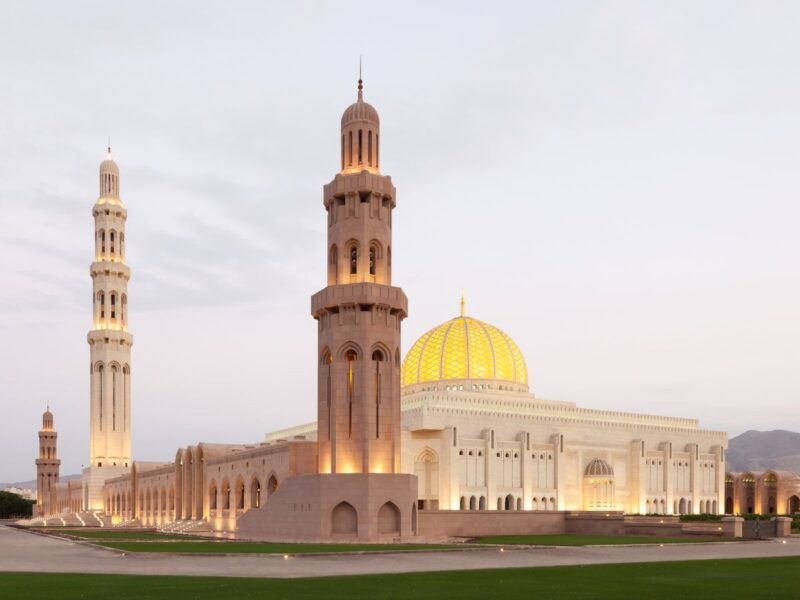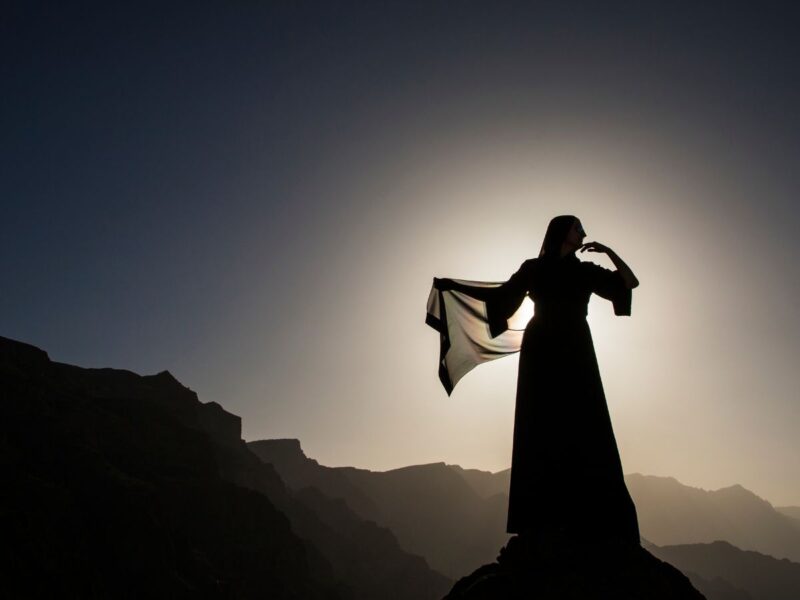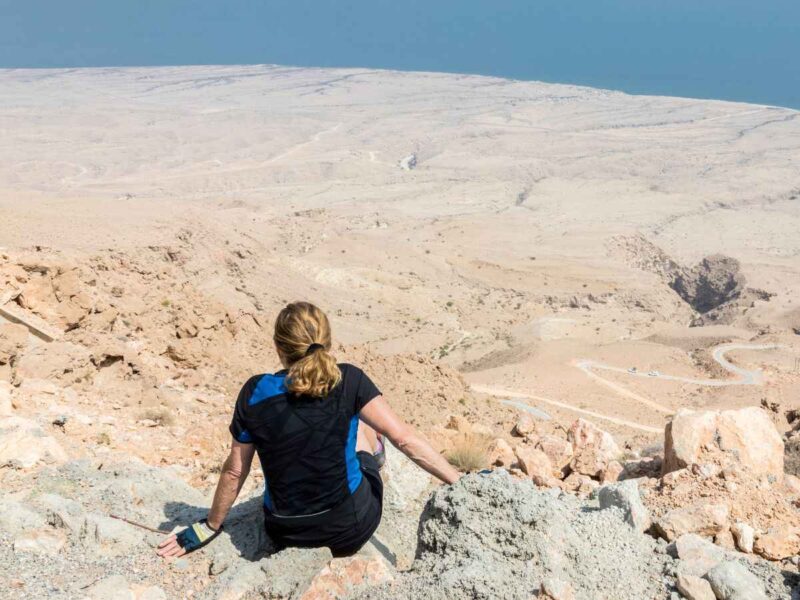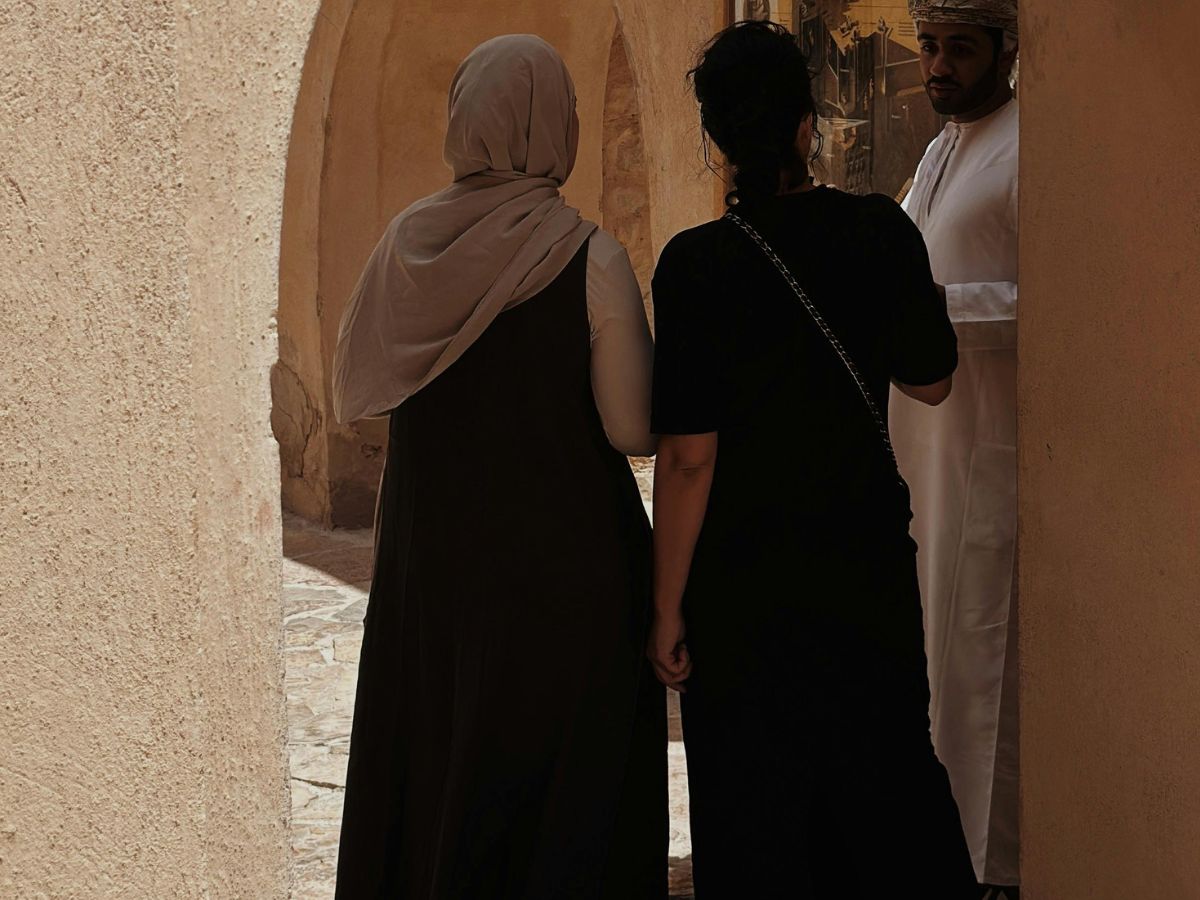The Sultan Qaboos Grand Mosque in Muscat stands as one of Oman’s most breathtaking architectural wonders. For women planning to visit this sacred site, understanding the dress code isn’t just about following rules. It’s about showing respect for Omani culture and ensuring a smooth, memorable experience. If you’re wondering how do women dress in Oman for mosque visits, this guide provides the complete answer. Many travellers find themselves unsure about what exactly “modest dress” means in practice. Will my long sleeves be long enough? Do I need to bring my own headscarf? What happens if I get it wrong at the entrance?
This guide answers every question you might have about dressing appropriately for the Sultan Qaboos Grand Mosque. We’ll walk you through the exact requirements, what full coverage really means, and how to prepare before you arrive. By the end, you’ll feel confident and ready to enjoy this magnificent mosque without any stress about your attire.
 Understanding the Oman Dress Code Requirements for Women
Understanding the Oman Dress Code Requirements for Women
The Sultan Qaboos Grand Mosque enforces strict dress code rules for all female visitors. These rules apply to everyone, regardless of your religious background or nationality. Your arms must be covered completely from your wrists to your shoulders and chest area. This means long sleeves with no gaps or openings. Short sleeves or rolled-up sleeves won’t be accepted.
Your legs need full coverage from your ankles to your hips. Trousers, long skirts, or dresses that reach your ankle bones are essential. Even a small amount of exposed skin will mean you need to cover up before entering.
All women must wear a head scarf or hijab that covers every strand of hair. The scarf should also drape over your neck and chest area. This isn’t optional. Without proper head coverage, you won’t be allowed inside. Your clothing must be loose fitting. Tight garments that show the shape of your body don’t meet the modesty requirements. Your fabrics must also be opaque. See-through or semi-transparent materials aren’t acceptable.
These dress requirements reflect deep-rooted Islamic traditions about modesty in sacred spaces. The mosque in Oman is an active place of worship where local people come to pray. By following these guidelines, you show respect not just for the building but for the Omani people who worship there and the traditions they hold dear. The rules apply equally to tourists in Oman and locals, Muslims and non-Muslims. Similar standards exist across the Middle East, including in Saudi Arabia, though specific requirements may vary slightly between countries.

What Full Coverage Means for a Woman in Oman
What Women in Oman Should Know About Coverage
Your sleeves must reach down to your wrist bones. When you raise your arms or move around, the sleeves shouldn’t ride up and expose any skin. Regular t-shirts won’t work, even if they seem long. Three-quarter length sleeves fall short of the requirements. The fabric must be solid and opaque. Sheer or lace sleeves that show skin underneath won’t be accepted.
Trousers, skirts, or dresses must reach your ankle bones at minimum. When you walk or sit down, no skin should become visible above your footwear. Long dresses work particularly well for mosque visits. Maxi dresses work well, but watch out for side slits. Long pants are a safe choice, but they must be loose enough not to show your body shape. Leggings alone don’t meet the requirements. If you want to wear leggings for comfort, you’ll need to put a long, loose skirt or dress over the top.
Dress Standards Beyond the Mosque: Bikini in Oman
Before diving into mosque-specific clothing, many female tourists wonder about general dress standards in Oman, including beach attire. While bikinis and one piece swimsuit options are acceptable at private hotel beaches, resorts, and designated swimming areas in Muscat and other tourist areas, they’re absolutely not appropriate for religious sites or most public places. If you’re exploring wadis or natural swimming spots, a one piece swimsuit with a cover-up shows more respect for the local culture. The contrast between resort and religious dress codes is significant. Understanding this distinction helps you pack appropriately for different parts of your Omani adventure and shows respect for local customs.
Headscarf Requirements in Detail
Your scarf needs to cover all of your hair, from your hairline to the nape of your neck. Not a single strand should be visible. The scarf should extend down over your neck and chest, covering everything from your hairline to your collarbone. Your ears should typically be covered. The scarf needs to stay in place throughout your visit. Secure fastening with pins or an under-scarf cap makes life much easier.

Choosing the Right Clothing for Muscat’s Climate
Best Clothing and Fabric Options
A long, loose dress, abaya, or other traditional Omani dress represents the simplest solution. These one-piece garments eliminate worries about gaps between tops and bottoms. Loose trousers paired with a long tunic create another excellent combination. The tunic should reach at least mid-thigh, preferably longer. Maxi skirts offer flexibility and comfort, particularly in hot weather. Pair yours with a long-sleeved shirt or lightweight jumper. Keep accessories minimal and modest. Whatever combination you choose, try it on before your trip. Walk around, sit down, and raise your arms to check nothing rides up or exposes skin.
The weather in Oman gets extremely hot, particularly during summer months. Cotton and linen breathe beautifully and help keep you cool despite being fully covered. Lightweight synthetic blends designed for athletic wear can also work well. Look for moisture-wicking fabrics and breathable clothing options. Consider colour carefully. Darker shades absorb more heat from the sun. Medium shades often provide the best balance. Modest patterns and prints are perfectly acceptable. Stay away from clingy, stretchy materials. Choose fabrics that drape and flow rather than hug your figure.
Comfortable Footwear Guidelines
Choose comfortable footwear you can slip off easily. Comfortable sandals or flip-flops work perfectly. Ballet flats or slip-on shoes also serve well. You might want to wear socks for hygiene reasons, but they aren’t required. You’ll be walking barefoot on the carpets inside the prayer hall.
The Abaya Rental Service
What the Mosque Provides and When to Use It
The Sultan Qaboos Grand Mosque offers a free abaya loan service at the entrance for women who need additional coverage. The rental abayas are full-length robes that cover you from neck to ankle. The mosque also provides headscarves. There’s no charge for borrowing them, and you simply return them when you leave. The mosque maintains a range of sizes, though availability can vary depending on how busy they are.
Rental abayas serve as an excellent backup option. If you arrive and discover your outfit doesn’t quite meet the requirements, these borrowed garments solve the problem immediately. Some visitors intentionally plan to use the rental service rather than buying appropriate clothing. However, during peak visiting times, you might wait in a queue to receive an abaya. Popular sizes sometimes run out temporarily.
Why Bringing Your Own Is Better
Arriving in your own appropriate clothing offers several advantages. You’ll move through the entrance much more quickly. Comfort matters when you’re wearing something for an extended period. Your own clothing fits properly and feels familiar. Personal hygiene preferences also come into play. Finally, having your own modest outfit gives you flexibility for visiting other mosques or religious sites during your trip.

The Entry Process for Female Tourists
What to Expect and Common Issues
The mosque has separate entrances for men and women. Female staff members stationed at the entrance will assess your outfit before you enter. They make this visual check quickly and politely, but it’s thorough. They’re looking for any exposed skin, transparent fabrics, or tight clothing. If your outfit meets all the requirements, you’ll receive permission to proceed. You’ll then remove your shoes and place them in the designated storage area.
Sleeves that ride up present a frequent problem. You might have full-length sleeves when standing still, but they creep up when you move around. Headscarves often slip during the walk from the car park to the entrance. Some fabrics look opaque indoors but become transparent in bright sunlight. Tight clothing causes problems even when it provides complete coverage. The staff will ask you to wear a loose abaya over the top.
Before you leave your accommodation, do a thorough check of your outfit. Stand in front of a mirror and move around. Raise your arms, bend over, and walk back and forth. Bring your own headscarf and several safety pins. Practice putting the scarf on securely before you arrive. Choose genuinely loose clothing rather than convincing yourself that something fitted will pass inspection. Allow extra time in your schedule, particularly if you’re visiting during peak hours. For insights on why small group tours over large groups can make navigating these cultural nuances easier, check out our guide.
Practical Tips for Women Visiting Oman
Muscat’s heat can feel intense, especially when you’re covering up completely. Summer temperatures often exceed 40 degrees Celsius. Breathable, lightweight fabrics make all the difference. Cotton and linen allow air to circulate. Staying hydrated before your visit helps your body cope with the heat. Drink plenty of water in the hours leading up to your mosque trip. Timing your visit wisely can dramatically improve your comfort. Early morning visits offer cooler temperatures and smaller crowds. Late afternoon visits also avoid the worst of the midday heat.
The Sultan Qaboos Grand Mosque offers stunning photo opportunities. Your headscarf might need adjusting before photos. Take a moment to check that it’s sitting neatly. The mosque has specific photography rules beyond clothing. You typically can’t take photos during prayer times. Some areas might be completely off-limits. Always check the current rules with staff members and respect any restrictions.
A small bag or backpack serves you better than a large handbag. Safety pins are your best friends when wearing a headscarf. Bring at least five or six pins. Your phone or camera naturally comes along for photos. Keep your load light and simple.
Understanding Omani Culture and Respect
Omani women typically wear abayas in public, paired with headscarves, reflecting the traditional dress style in Oman. Modesty in Islamic culture extends beyond merely covering skin. The concept encompasses behaviour and overall demeanour. You’ll notice that Omani men also dress modestly, typically wearing the traditional dishdasha. The same dress code standards apply to both locals and tourists when visiting religious sites, ensuring everyone shows equal respect. The dress code for visiting the mosque is actually stricter than what you’ll encounter in everyday situations around Oman. On Muscat’s streets, female tourists commonly wear a casual shirt and shorts without issue. The mosque’s requirements reflect its status as a sacred space and the importance of respecting local traditions.
Appropriate dress represents just one element of respectful mosque visiting. Your behaviour matters equally. Keep your voice low when talking to companions. Children should be supervised carefully and encouraged to move calmly. Treat the mosque’s staff with courtesy and patience. If you encounter worshippers during your visit, give them space and privacy. Don’t photograph people praying without permission.
Conclusion
Visiting the Sultan Qaboos Grand Mosque offers an unforgettable glimpse into Omani culture and Islamic architecture. Getting the dress code right ensures you can focus on the beauty around you rather than worrying about your attire. Remember, full coverage means wrist-to-ankle clothing, a properly secured headscarf, and loose-fitting garments. Whilst the mosque provides rental abayas, bringing your own appropriate clothing makes for a smoother, more comfortable experience.
The key is preparation. Check your outfit before you leave, bring safety pins for your headscarf, and wear comfortable slip-off shoes. When you arrive properly dressed and ready, you’ll breeze through the entrance and have more time in Oman to appreciate this stunning building. Dressing respectfully isn’t about restriction. It’s about showing appreciation for a culture different from your own and gaining access to spaces that hold deep meaning for local people.
Planning a trip to Oman and want expert guidance on cultural experiences like this? Small Group Adventure Tours specialises in creating tailor-made holidays that help you explore destinations respectfully and authentically. Start your adventure with Undiscovered Destinations and experience Oman the authentic way—book your Oman tour today for a seamless blend of tradition and discovery.




